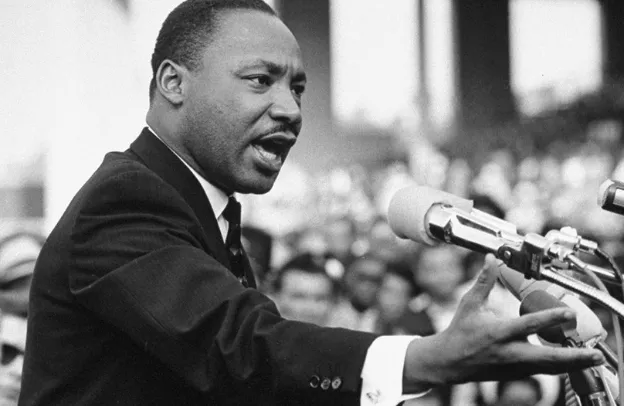Beyond Demographics: Using Storytelling to Reach the Heart of Your Audience

Are you looking for how to use storytelling to reach the heart of your audience? You are in the right place. Think about it. In the frenzy world of modern business, where every brand vies for a fraction of consumer attention, demographic data has long served as the compass guiding marketing strategies. But as businesses increasingly recognize the limits of such traditional metrics, a new approach is emerging—one that centers not on numbers, but on narratives.
Want to learn more about storytelling? Start by downloading the first chapter of The Storytelling Mastery.
At the core of today’s business shift is storytelling, a potent tool that transcends demographic data to engage audiences on a deeper, and more emotional level.
In this article, we will delve into why storytelling is crucial for attracting and serving the right audience and how the “Own Your Story”, our signature program, can transform your business narrative in less than 90 days.
What Are The Limitations of Demographic Targeting
Let’s face it. For decades, marketers have relied on demographic data—age, gender, income, and location—as the primary means of understanding their target audience.
This approach, while useful, often falls short of capturing the complexities of consumer behavior. Demographic profiles can predict what people might buy, but they rarely reveal why they buy.
Consider the case of Blockbuster, a company once synonymous with video rentals. In the late 1990s and early 2000s, Blockbuster’s demographic data suggested that their core customers were families and casual viewers who frequented their stores weekly.
However, they missed the evolving desires of a more tech-savvy audience that sought convenience and innovation.
As a result, Blockbuster’s failure to adapt to the growing preference for digital streaming led to its decline, while Netflix, which leveraged a more nuanced understanding of audience preferences through storytelling and innovation, surged to success.
See also 5 Best Ways Netflix Uses Storytelling And How Other Businesses Can Replicate The Same
The Power of Storytelling in Audience Engagement
Storytelling, in the business context, involves crafting and sharing narratives that resonate emotionally with your audience. Unlike static demographic data, stories are dynamic and can evolve with your audience’s changing interests and values.
This approach allows businesses to connect with audiences on a personal level, fostering loyalty and engagement. If you are new to the idea of storytelling, you might consider checking out the first book from our Storytelling Mastery. It will literally take you by the hand on the ABC of storytelling.
“Storytelling is the most powerful way to put ideas into the world today,” says Robert McKee, renowned author of Story: Substance, Structure, Style, and the Principles of Screenwriting. McKee’s assertion highlights storytelling’s role in transforming abstract ideas into relatable experiences.
An example of effective storytelling can be seen in Patagonia’s approach to environmental activism. Instead of merely promoting their products, Patagonia shares compelling stories about their efforts to combat climate change and support sustainable practices.
See also Why You Need a Life Mission: 3 Lessons from Martin Luther King Jr.
These stories align with their audience’s values, creating a strong emotional bond and driving brand loyalty. You too can do the same in your business.
According to a Harvard Business Review study, brands that connect emotionally with their customers enjoy a 17% increase in sales and 10% higher customer satisfaction.
The Five-Step Journey to Discover Your Core Message
The first step in harnessing storytelling for business is to define your core message. This message should encapsulate what your business stands for and what it aims to achieve.
A compelling core message serves as the foundation upon which your entire narrative is built. Never underestimate that.
For instance, TOMS Shoes started with the simple yet powerful message of “One for One”—for every pair of shoes purchased, a pair was donated to a child in need. This core message not only defined their business model but also resonated deeply with consumers who value social impact.
Know Your Audience Beyond Demographics
Understanding your audience requires going beyond basic demographic data. It involves delving into the emotions, values, and aspirations of your audience. This deeper insight enables businesses to craft stories that truly resonate.
One of the core missions of AClasses Media is to help entrepreneurs attract the right audience they want to serve. It’s not simply about finding an audience but serving them and to serve an audience well, you first need to know them and connect with them emotionally.
See also Is Your Storytelling Putting Your Audience to Sleep?
A 2019 Nielsen report found that consumers are increasingly seeking brands that align with their personal values.
Companies like Nike have successfully leveraged this trend by addressing social issues and standing up for causes that matter to their audience.
Nike’s “Dream Crazy” campaign, featuring Colin Kaepernick, tapped into a narrative that spoke directly to their audience’s values, generating significant engagement and brand loyalty. Is that something you can also consider in your business? I think it is.
Build a Compelling Story Framework
Once you’ve established your core message and gained insights into your audience, the next step is to construct a story framework. This framework should include elements such as a clear narrative arc, relatable characters, and a compelling conflict or challenge.
See also Are You Lost in Translation? Learn to Bridging the Gap Between Brand Vision and Audience Perception
A well-crafted story framework engages audiences by presenting relatable characters and situations. Apple’s “Think Different” campaign, for instance, celebrated innovators and rebels who changed the world, presenting Apple as a brand that values creativity and individuality.
This narrative framework effectively communicated Apple’s brand identity and resonated with its target audience. This is what we are talking about and we continue to highlight it on our Business Storytelling Series.
The AClasses Business Storytelling Series is a LinkedIn audio live event designed to revolutionize your business approach through the power of storytelling. Join our live session, every 14 days, if you are interested in learning more. And that leads us to authenticity.
Learn to Communicate with Authenticity
Authenticity is crucial in storytelling. Your narrative should reflect genuine values and experiences, rather than manufactured personas or exaggerated claims. Authenticity fosters trust and credibility, essential components for building lasting relationships with your audience.
Ben & Jerry’s is a prime example of a brand that communicates with authenticity. Their storytelling revolves around their commitment to social justice, environmental sustainability, and fair trade.
This authentic approach has earned them a loyal customer base who appreciate the brand’s transparency and values.
Remember to Measure and Adapt Along the Way
Finally, it’s important to measure the effectiveness of your business storytelling efforts and be willing to adapt. Consider utilizing analytics tools to track engagement metrics, such as social media interactions, website traffic, and conversion rates.
Regularly review these metrics to understand what resonates with your audience and refine your narrative accordingly.
See also The Power Of Storytelling For Lead Generation In Your Business
For instance, Starbucks frequently monitors customer feedback and social media conversations to adjust their marketing strategies.
Their “Meet Me at Starbucks” campaign, which showcased real-life moments of connection at their stores, was refined based on audience responses, leading to enhanced engagement and brand affinity.
The “Own Your Story” Program: Transformative Results in Less Than 90 Days
The “Own Your Story” training program offers a comprehensive approach to reshaping your business narrative. Over the course of five transformative steps, participants learn to craft and communicate stories that resonate with their audience and drive success.
Program participants begin by discovering their core message, delving into audience insights, and building a compelling story framework. They then focus on authentic communication and measure their storytelling impact to make data-driven adjustments.
The most interesting part of it is that you are never left alone to figure it out yourself. Instead, you join a like-minded community of other entrepreneurs and a storytelling expert, Obehi Ewanfoh, who will happily take you by the hands until you can find your way around.
Enrollment in the “Own Your Story” program is open to businesses seeking to enhance their storytelling capabilities and connect more deeply with their audience. The program offers personalized coaching, actionable strategies, and ongoing support to help participants achieve their business and professional goals.
Conclusion on Using Storytelling to Reach the Heart of Your Audience
As the business landscape becomes increasingly competitive, relying solely on demographic data is no longer sufficient. Instead, storytelling offers a powerful alternative, enabling businesses to engage their audience on a deeper level and build lasting connections.
See also The Art of Retention: Keeping Your Audience Engaged Through Compelling Narratives
By crafting a compelling narrative, communicating with authenticity, and continually adapting, businesses can achieve remarkable success.
This is the point – in a world where every brand is vying for attention, the right story can set you apart, forge genuine connections, and pave the way for lasting success.
Want to learn more about storytelling? Start by downloading the first chapter of The Storytelling Mastery.






